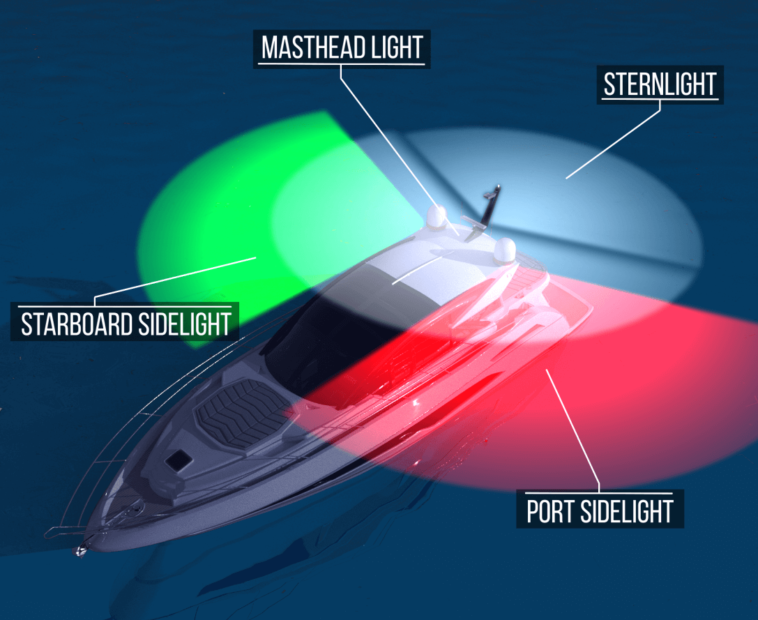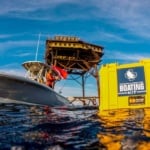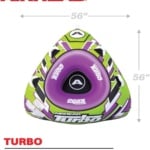So you’ve finally decided to take your boat out on the water and enjoy some well-deserved time under the sun. But before you set sail, it’s important to make sure you understand the legal requirements for boat lighting and signals. Whether you’re cruising along the coast or navigating through the dark, proper lighting and signaling play a crucial role in keeping you and other boaters safe. In this article, we’ll break down the essentials of boat lighting and signals, ensuring you have all the knowledge needed to comply with regulations and navigate with confidence.
Definitions
Before diving into the legal requirements for boat lighting and signals, it’s important to understand a few key definitions. These definitions will help lay the foundation for the rest of the article and ensure clarity as we explore each requirement.
Navigational Lighting
When it comes to boat lighting, there are specific requirements based on the type of vessel and the circumstances it finds itself in. Let’s take a closer look at the requirements for different types of vessels and situations.
Requirements for Vessels Under Power
For vessels that are under power, the legal requirements for lighting are relatively straightforward. They must display the proper lights based on their size and operations. This ensures that other vessels can identify and navigate around them safely.
Requirements for Sailboats and Unpowered Vessels
Sailboats and unpowered vessels have their own set of requirements when it comes to lighting. Since they rely on wind power rather than engine power, they need to ensure that they have the right lights to alert other vessels of their presence and intentions.
Requirements for Recreational Vessels at Anchor
When a recreational vessel is at anchor, there are specific lighting requirements that must be met. These requirements ensure that other vessels can see the anchored vessel and avoid any potential collisions.
Requirements for Moored Vessels
Similar to vessels at anchor, moored vessels also have specific lighting requirements. These requirements are designed to prevent collisions and ensure that other vessels can safely navigate around moored vessels.
Requirements for Vessels Engaged in Fishing
Vessels engaged in fishing also have their own unique lighting requirements. These requirements are in place to protect both the fishing vessel and other vessels in the area, ensuring safe operation and avoiding any accidents.
Requirements for Towing Vessels
In order to ensure visibility and safety, towing vessels have specific lighting requirements. These requirements are designed to indicate the presence of a tow and enable other vessels to navigate around the tow safely.
Requirements for Personal Watercraft
Personal watercraft, such as jet skis, must also adhere to specific lighting requirements. These requirements help ensure the safety of both the individuals operating the personal watercraft and other vessels on the water.
Requirements for Vessels Operating in Restricted Visibility
Operating a vessel in restricted visibility can be particularly challenging. To mitigate the risk of accidents, vessels operating in these conditions must comply with certain lighting requirements to ensure they are visible to other vessels.
Visible Range and Placement
Simply having the proper lighting on a vessel is not enough. There are additional considerations when it comes to the visible range and proper placement of navigation lights. Let’s explore these requirements in more detail.
Visibility of Lights
One of the key requirements for navigation lights is their visibility. These lights must be bright enough and positioned in a way that they can be seen by other vessels from a safe distance. This ensures adequate time for navigation and avoids any potential collisions.
Placement of Navigation Lights
The placement of navigation lights on a vessel is crucial for effective communication with other vessels. Specific guidelines dictate where these lights should be mounted to maximize visibility and provide clear signals to nearby vessels.
Height Requirements for Navigation Lights
The elevation at which navigation lights are mounted on a vessel is also regulated. This ensures that these lights are positioned at a height that allows them to be seen over the water even when the vessel may be pitching or rolling in rough conditions.
Color and Arc of Visibility
The colors used for navigation lights have specific meanings and play a crucial role in communicating a vessel’s position and intention. Additionally, the arc of visibility of these lights ensures that they can be seen from a wide range of angles, further enhancing safety.
Additional Lighting Considerations
In certain situations, additional lighting may be required to enhance visibility and ensure the safety of all vessels involved. These additional lighting considerations are designed to address specific circumstances that may require extra caution and attention.
Navigation Light Types
There are different types of navigation lights that vessels may be required to display. Let’s take a closer look at each of these types and their purposes.
Masthead Light
The masthead light is typically the most visible light on a vessel and is a requirement for most vessel types. It is usually a white light that is visible from both the front and the sides of the vessel, indicating that it is under power and in operation.
Sidelights
Sidelights are essential for indicating the presence and direction of a vessel to other vessels. These lights are usually red and green, with the red sidelight on the left (port) side and the green sidelight on the right (starboard) side, when facing forward.
Sternlight
The sternlight is positioned at the rear of the vessel and is typically a white light. It indicates that the vessel is underway and helps other vessels determine the vessel’s direction and orientation.
All-Round Lights
All-round lights are required for certain vessels and can be seen from any direction. They provide 360-degree visibility, which is particularly important in situations where a vessel may be anchored or adrift.
Special Lights
Certain vessels may have additional special lights that are required based on their operations or circumstances. These lights serve specific purposes and ensure the safety of both the vessel and other vessels in the vicinity.
Light Intensity and Visibility
The intensity of navigation lights is regulated to ensure they can be seen from a safe distance. These regulations ensure that vessels can identify each other in low-light conditions and avoid collisions.
Other Light Requirements
In addition to the requirements for navigation lights, there are other types of lights that vessels may be required to have in certain situations.
Anchor Lights
Vessels that are at anchor are required to display anchor lights. These lights indicate that the vessel is not underway and helps other vessels navigate around it safely.
Emergency Lights
In emergency situations, vessels may be required to display emergency lights. These lights are designed to alert nearby vessels to the emergency and ensure safety during potentially hazardous situations.
Communication Lights
Certain vessels, such as commercial vessels, may be required to display communication lights. These lights indicate the vessel’s communication status and enable effective communication between vessels.
Sound Signaling Devices
In addition to lighting requirements, vessels must also have the appropriate sound signaling devices to communicate with other vessels. These devices are essential for alerting nearby vessels and ensuring safe navigation.
Requirements for Sound Signaling Devices
Specific requirements are in place for the type and audibility of sound signaling devices. These requirements ensure that vessels can effectively communicate their intentions and maneuver safely in various situations.
Types of Sound Signals
Different types of sound signals have different meanings and are used to communicate different intentions or warnings. Understanding these signals is crucial for safe navigation and effective communication between vessels.
Daytime Signals
While most of the attention is given to the requirements for nighttime navigation lights, vessels must also adhere to specific requirements for daylight signals. These signals help ensure visibility and prevent accidents even in broad daylight.
Exceptions and Limitations
There may be exceptions and limitations to the requirements for boat lighting and signals based on specific circumstances or vessel types. It is important for boat owners and operators to familiarize themselves with these exceptions and limitations to ensure compliance with the law.
Enforcement and Penalties
Compliance with the legal requirements for boat lighting and signals is crucial for safety on the water. Failure to adhere to these requirements can lead to penalties, fines, or other legal consequences. It is important for all boat owners and operators to understand and follow these regulations to ensure their own safety and the safety of others.
In conclusion, understanding and complying with the legal requirements for boat lighting and signals is essential for safe navigation on the water. Whether it’s the proper placement and visibility of navigation lights or the use of sound signaling devices, every boat owner and operator must be aware of and adhere to these regulations. By doing so, we can all enjoy a safe and enjoyable boating experience.





